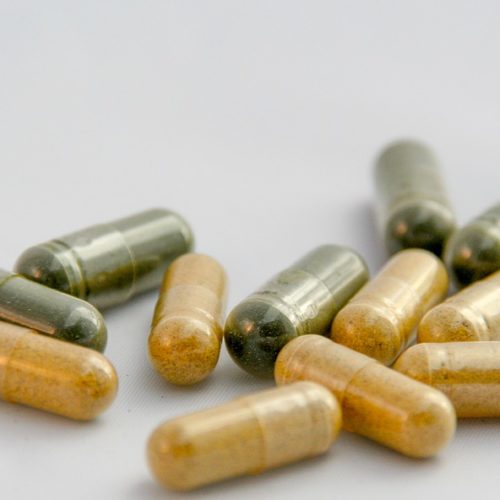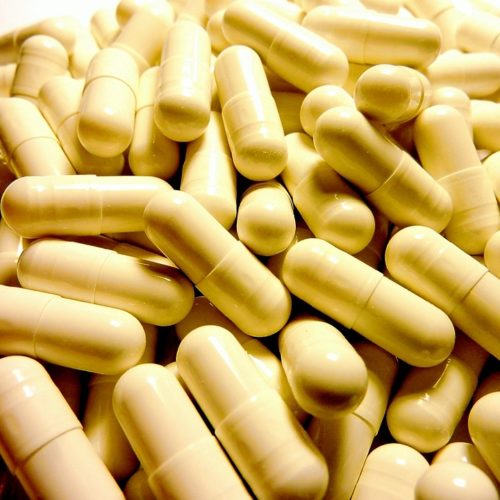The History of Synthetic Vitamins
In the 1940’s advances were made in chemistry and it became possible for companies to cheaply manufacture synthetic versions of vitamins. Certain brands began producing synthetic tablets and since then millions of people all over the world have been taking these unnatural “vitamins” with the belief that they will help them live a longer and healthier life. The majority of the public have no idea that the big “brand name” vitamins on the shelves of most grocery and drug stores are synthetic toxins that are actually mutagenic and carcinogenic. What this means is they are basically poison for the body, fueling disease and disorders, including cancer, arthritis, osteoporosis, brittle bones, and Alzheimer’s disease.
These synthetic brand name supplements are dangerous and contain Aspartame, one of the leading causes of Fibromyalgia and IBS (Irritable Bowel Syndrome). The “other ingredients” usually means animal parts and cancer causing artificial sweeteners. The artificial sweeteners Aspartame, Acesulfame Potassium, Sucralose or Sorbitol have been found to cause disruptions to metabolism, mutating cells and DNA.
Synthetic vitamin A comes from fish liver juices loaded with toxic PCB’s and mercury. Natural organic vitamin A, from real foods, has antioxidant properties, but synthetic vitamin A accomplishes just the opposite. In one study, subjects who received synthetic A – beta carotene had an eight percent higher incidence of fatal heart attacks, strokes, and lung cancer than those who got the placebo (sugar pill).
Synthetic vitamin C comes from a sulfuric acid by-product of GMO corn syrup or starch created in a lab that causes problems with the lining of the digestive track. This kind of fractionated, synthetic chemical never grew in the ground or received sunlight, but was formulated from genetically modified corn in some lab either in China or in New Jersey. Here is some documentation on the many differences between synthetic and natural vitamin C, as discussed by Dr. Timothy O’Shea M.D. author of “Conventional Medicine Vs. Holistic: A World of Difference”:
“The ascorbic acid you buy at the grocery store every few weeks, thinking you are buying Vitamin C, is just a chemical copy of naturally occurring ascorbic acid, which itself is still only a fraction of the actual Vitamin C. Real vitamin C is part of something living, and as such, can impart life. Your synthetic, fractionated chemical ascorbic acid never grew in the ground, never saw the light of day, never was alive or part of anything alive. It’s a chemical, a cornstarch derivative, a sulfuric acid by-product. In your body it’s just another drug. Synthetic vitamins have toxic effects from mega-doses and actually can increase the white blood cell count. Vitamins are only necessary in minute quantities on a daily basis. Whole food vitamins, by contrast, are not toxic since the vitamin is complexed in its integral working form, and requires nothing from the body, and triggers no immune response.”
Synthetic Vitamin D – Made from Petroleum Extracts
Synthetic vitamin D is toxic and can result in permanent deposit of minerals in the heart, lungs and kidneys. It’s made from petroleum extracts, coal tar derivatives, and irradiated cattle brains. It may even contain formaldehyde and ammonia. (http://www.doctorsresearch.com/articles4.html)
In nearly all non-organic vitamins there are genetically engineered ingredients, pesticides, and animal drug residues, pathogens, feces, hormone-disrupting chemicals, toxic sludge, slaughterhouse waste, chemical additives, preservatives, and chemical by-products.
Organic vitamins, minerals, antioxidants, probiotics, and enzymes from real whole food sources are real medicine and synthetic vitamins are simply not. Before synthetic vitamins came out on the market, cancer was quite rare. Since these toxins have been put out on the shelves of our trusted pharmacies and grocery stores, advertised as “vitamins”, the cancer rates have steadily increased. If your vitamins are not from natural, organic, whole food sources, then they’re probably making you sick.
Common Synthetic Vitamins to Avoid:
Look for clues on your vitamin’s label that offer insight into the origin of the vitamin.
- Vitamin A: Retinyl Palmitate
- Vitamin B1 (Thiamine): Thiamine Mononitrate, Thiamine Hydrochloride
- Vitamin B2 (Riboflavin): Riboflavin
- Pantothenic Acid: Calcium D-Pantothenate
- Vitamin B6 (Pyridoxine): Pyridoxine Hydrochloride
- Vitamin B12: Cyanocobalamin
- PABA (Para-aminobenzoic Acid): Aminobenzoic Acid
- Folic Acid: Pteroylglutamic Acid
- Choline: Choline Chloride, Choline Bitartrate
- Vitamin C (Ascorbic Acid): Ascorbic Acid
- Vitamin D: Irradiated Ergosteral, Calciferol
- Vitamin E: dl-alpha tocopherol, dl-alpha tocopherol acetate or succinate
NOTE: The “dl” form of any vitamin is synthetic.
Other Toxic Ingredients to Avoid In Supplements
- Magnesium stearate (or stearic acid)
- Monosodium Glutamate (MSG) disguised as “natural flavors”
- Carnauba wax is used in car wax and shoe polish
- Titanium dioxide is a carcinogen



